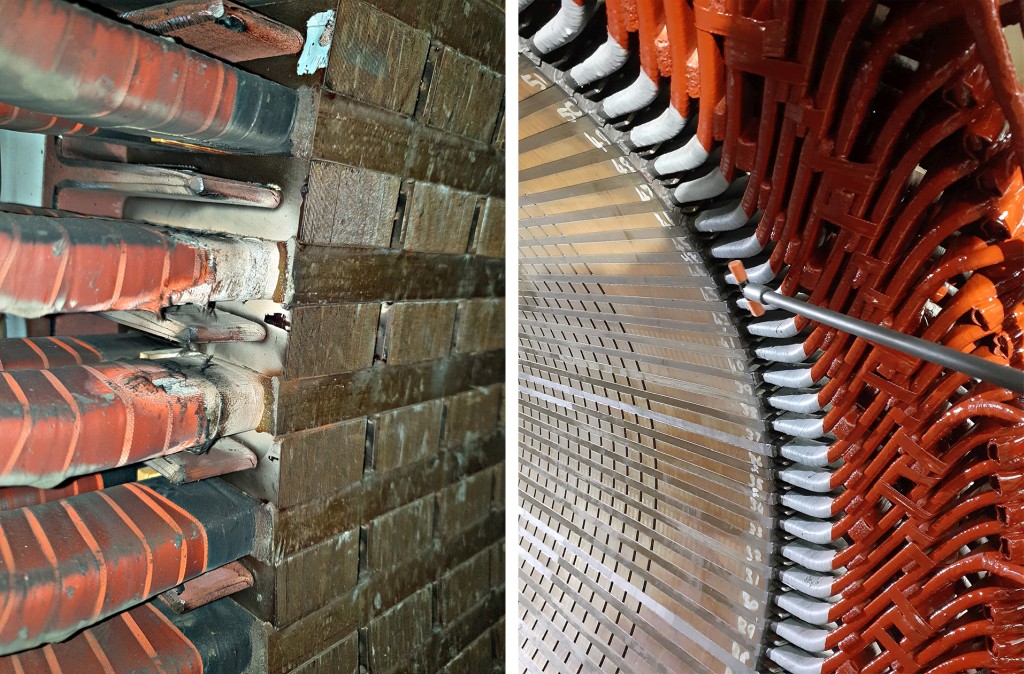At the beginning of last year Marthinusen & Coutts (M&C) was requested by a petro-chemical company to investigate the cause of partial discharge damage to the stator windings of one of a number of 9.7MW 15kV alternators operating in the company’s plant.

This composite “before-and-after” picture shows (left) damaged stator windings of one of the alternators sent to M&C to assess and repair, and (right) the same unit after M&C had identified the causes of the problem and restored it to its original condition. This composite “before-and-after” picture shows (left) damaged stator windings of one of the alternators sent to M&C to assess and repair, and (right) the same unit after M&C had identified the causes of the problem and restored it to its original condition.
An off-line partial discharge test conducted on the stator at M&C’s repair facility in Cleveland, Johannesburg, confirmed that the anti-corona tape forming the outermost layer of the slot portion of the stator coils had been electrically eroded, in some instances extending deep into the core.
“We considered the likely causes to be a combination of three possible factors, namely high load cycling of the alternator during roughly eight years of operation, imperfect fitting of the coils in the slots during manufacture and the use during manufacture of low viscosity VPI resin applied on the outside of the coils after taping as added protection against electrical erosion,” said Rob Melaia, M&C’s Engineering & Technical Executive.
The two last-mentioned probable causes formed the basis of the repair procedure that M&C adopted and applied in repairing the stator winding in early-2020. They subsequently applied the same procedure last year in repairing the windings of two other alternator stators from the same plant that were similarly damaged.
“As an alternative to the original anti-corona slot protection tape we applied anti-corona slot protection varnish and also applied anti-corona stress grading varnish in place of the original anti-corona stress grading tape. Furthermore, to achieve reduced secondary resin drainage we considered future application of an improved VPI process using more viscous resin than had been applied during manufacture,” Rob explained.
“The scope of the repair – and the patience and meticulousness required to implement it effectively – can be appreciated from the physical size of the stator and the 108 slots it is made up of. This means there were 432 coil ends to mask off and apply varnish to. The varnish has to reach between the top and bottom coils but not run down along the overhang – all addressed by the masking process,” he added.
Tests carried out after completion of the repairs to the three stators included a high voltage test to determine the integrity of the insulation and a repeat of the initial off-line partial discharge test to confirm that the windings were exhibiting less partial discharge than before.
Referring to high thermal cycling as a probable contributary cause to the partial discharge damage to the stator windings, Rob said: “We have engaged with the relevant people at the company regarding operational measures that would reduce thermal cycling related electrical erosion in future.”
In addition, on M&C’s advice, capacitive bus-couplers have been fitted to all three machines to allow regular scheduled on-line partial discharge testing on site.
